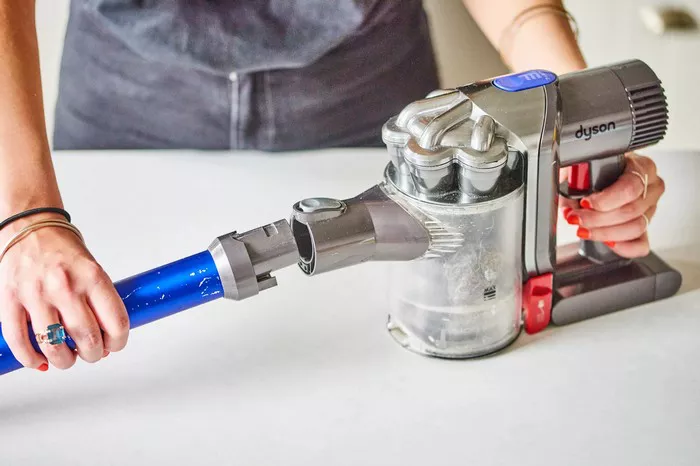Vacuum machines, also known as vacuum cleaners or vacuums, are essential tools in any cleaning arsenal. They play a crucial role in maintaining cleanliness and hygiene in homes, offices, and commercial spaces. These machines utilize suction to effectively remove dust, dirt, pet hair, and other debris from various surfaces, including carpets, hardwood floors, tiles, and upholstery. The importance of vacuum machines lies in their ability to not only improve the appearance of indoor spaces but also contribute to better indoor air quality by capturing and trapping allergens and pollutants.
Types of Vacuum Machines
1. Upright Vacuums: Upright vacuums are popular for their powerful suction and ease of use. They feature a vertical design with the motor and suction head in a single unit, making them ideal for cleaning large carpeted areas. Many upright vacuums come with adjustable height settings to accommodate different carpet pile lengths.
2. Canister Vacuums: Canister vacuums consist of a separate canister unit connected to a wand and cleaning nozzle via a flexible hose. They offer versatility in cleaning various surfaces, including carpets, hardwood floors, and upholstery. Canister vacuums are known for their maneuverability and ability to reach tight spaces and corners.
3. Handheld Vacuums: Handheld vacuums are compact and lightweight, making them perfect for quick cleanups and spot cleaning. They are highly portable and can be used to clean stairs, upholstery, car interiors, and other hard-to-reach areas. Handheld vacuums are often cordless, operating on rechargeable batteries for added convenience.
4. Robotic Vacuums: Robotic vacuums, also known as robot vacuums or robovacs, are autonomous cleaning devices that navigate floors and carpets to vacuum dust and debris. Equipped with sensors and intelligent mapping technology, robot vacuums can navigate around furniture and obstacles, providing hands-free cleaning convenience. They are programmable and can be scheduled to clean at specific times.
Preparation Before Using a Vacuum Machine
Before using a vacuum machine, it’s essential to prepare the area and the machine itself for optimal cleaning performance:
1. Clear the Area: Remove any obstacles, such as toys, furniture, or clutter, from the cleaning area to allow for uninterrupted vacuuming.
2. Check Filters and Bags: If your vacuum has a filter or bag, check and clean or replace them as needed to ensure proper airflow and suction power.
3. Plug In and Inspect: Make sure the vacuum is properly plugged into a power outlet and inspect the power cord for any damage. Ensure that all attachments are securely connected and ready for use.
Operating the Vacuum Machine
Operating a vacuum machine effectively involves following these steps:
1. Turn On/Off: Locate the power switch on the vacuum and turn it on. After use, switch off the vacuum and unplug it from the power source.
2. Adjust Settings: Depending on the surface being cleaned, adjust the settings on the vacuum, such as suction power and brush roll speed. Lower suction power may be suitable for delicate surfaces like curtains, while higher suction power may be needed for deep carpet cleaning.
3. Maneuvering: Hold the vacuum handle and guide it across the surface to be cleaned, using smooth, overlapping strokes. For optimal results, vacuum in both forward and backward motions, ensuring thorough coverage.
Tips for Efficient Vacuuming
To maximize the efficiency of vacuuming, consider the following tips:
1. Overlap Strokes: Overlap each vacuuming stroke by about half to ensure complete coverage and removal of dirt and debris.
2. Change Directions: Change the direction of vacuuming occasionally to lift dirt and pet hair from different angles.
3. Focus on High-Traffic Areas: Pay special attention to high-traffic areas such as entryways, hallways, and living rooms, where dirt and debris tend to accumulate more.
Maintenance and Care
Regular maintenance is essential to keep your vacuum machine in optimal condition:
1. Empty Dustbin/Replace Bag: Empty the dustbin or replace the vacuum bag when it’s full to prevent loss of suction power and maintain airflow.
2. Clean/Replace Filter: Clean or replace the filter regularly according to the manufacturer’s instructions to ensure proper filtration and prevent clogs.
3. Inspect for Damage: Periodically inspect the vacuum for any signs of damage or wear, such as frayed cords or broken attachments. Replace damaged parts promptly to avoid safety hazards and maintain performance.
Safety Precautions
To ensure safe operation of the vacuum machine, observe the following precautions:
1. Avoid Liquids and Large Debris: Do not vacuum up liquids, wet spills, or large debris that may damage the vacuum or pose a safety risk.
2. Keep Power Cord Away: Keep the power cord away from the vacuum’s rotating parts, such as the brush roll, to prevent entanglement or damage.
3. Turn Off Before Maintenance: Always switch off the vacuum and unplug it from the power source before performing any maintenance or troubleshooting tasks.
FAQs
Q1: Can I use the same vacuum on different types of flooring?
A1: Yes, many vacuum machines are designed to clean various surfaces, including carpets, hardwood floors, tiles, and laminate. However, some models may have specific settings or attachments for different floor types.
Q2: How do I remove stubborn stains or pet hair?
A2: For stubborn stains, pre-treat the area with a carpet cleaner or stain remover before vacuuming. To remove pet hair, use a vacuum with a specialized pet hair attachment or brush roll designed to lift and trap pet hair effectively.
Q3: What should I do if my vacuum loses suction power?
A3: Check the vacuum’s filter and dustbin or bag for blockages and clean or replace them as needed. Also, inspect the vacuum’s brush roll and hose for any obstructions that may impede airflow.
Conclusion
In conclusion, vacuum machines are versatile cleaning tools that play a vital role in maintaining cleanliness and hygiene in indoor spaces. By understanding the different types of vacuum machines available and following proper preparation, operation, and maintenance procedures, users can achieve optimal cleaning results with their vacuum machines. Remember to prioritize safety precautions and leverage practical tips for efficient vacuuming. Put these tips and techniques into practice for cleaner, healthier environments.

